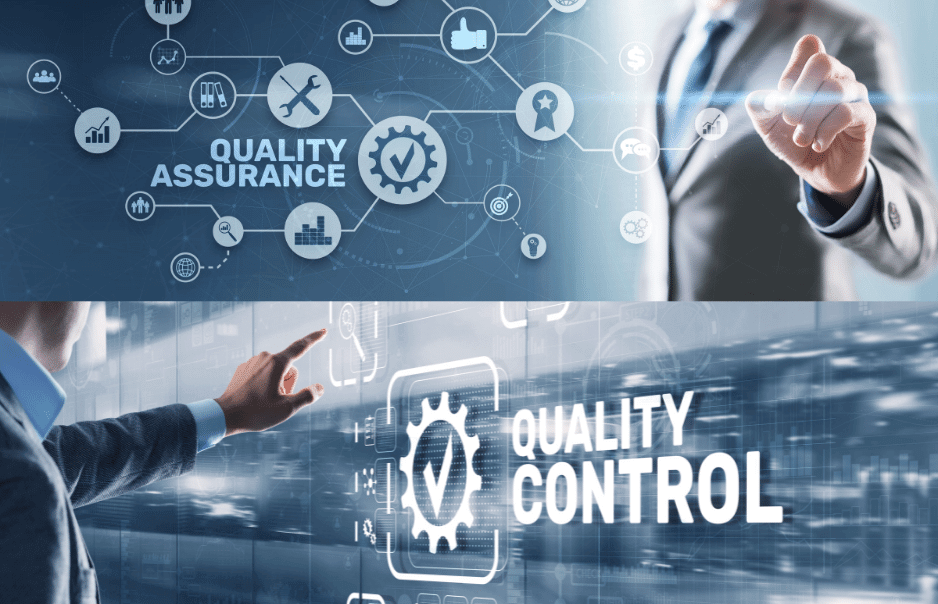Quality control and assurance are pivotal elements in risk management strategies within the food industry, particularly when it comes to food insurance. Effective quality management not only ensures that food products meet safety and quality standards but also mitigates risks that could lead to insurance claims, operational disruptions, and reputational damage. This article explores the significance of quality control and assurance, key components of a robust quality management system, and best practices for implementation in the context of food insurance.
1. Importance of Quality Control and Assurance
1.1 Ensuring Food Safety
Food safety is a fundamental concern in the food industry. Quality control and assurance processes are designed to ensure that food products are safe for consumption, free from contaminants, and meet regulatory standards. By adhering to rigorous safety protocols, businesses can prevent foodborne illnesses and avoid incidents that could lead to insurance claims and legal liabilities.
1.2 Preventing Quality-Related Risks
Consistent quality is crucial for maintaining consumer trust and satisfaction. Quality control measures help identify and rectify deviations from product standards before they reach the market. This minimizes the risk of recalls, customer complaints, and potential insurance claims related to product defects or quality issues.
1.3 Compliance with Regulations
Regulatory compliance is essential for avoiding fines and maintaining operational licenses. Quality assurance processes ensure that food products meet legal and industry standards, including those set by organizations such as the Food and Drug Administration (FDA) and the European Food Safety Authority (EFSA). Adhering to these standards helps businesses stay compliant and reduces the risk of regulatory penalties.
1.4 Enhancing Operational Efficiency
Effective quality management contributes to operational efficiency by streamlining processes, reducing waste, and minimizing rework. By implementing robust quality control procedures, businesses can improve their production processes and achieve better consistency in product quality, ultimately enhancing overall efficiency and profitability.
1.5 Protecting Brand Reputation
A strong commitment to quality control and assurance safeguards a company’s reputation. Consistent product quality and safety build consumer trust and loyalty. Conversely, quality issues can lead to negative publicity, loss of customer confidence, and financial losses, which can also impact insurance premiums and coverage.
2. Key Components of a Quality Control and Assurance System
2.1 Quality Standards and Specifications
2.1.1 Defining Standards
Establish clear quality standards and specifications for all food products. This includes:
- Product Specifications: Detailed descriptions of product characteristics, including appearance, texture, flavor, and nutritional content.
- Safety Standards: Requirements for food safety, including limits for contaminants, allergens, and hygiene standards.
2.1.2 Documentation
Maintain comprehensive documentation of quality standards and specifications. This documentation serves as a reference for production, inspection, and quality assurance activities.
2.2 Quality Control Processes
2.2.1 Incoming Material Inspection
Inspect raw materials and ingredients upon arrival to ensure they meet quality standards. This includes:
- Supplier Verification: Assessing and validating suppliers to ensure they provide high-quality and safe ingredients.
- Testing and Sampling: Conducting tests and sampling to verify the quality and safety of incoming materials.
2.2.2 In-Process Quality Control
Monitor quality during the production process to detect and address issues in real-time. Key activities include:
- Process Monitoring: Regularly checking production processes to ensure they adhere to established standards.
- In-Process Testing: Performing tests on products at various stages of production to ensure quality and safety.
2.2.3 Final Product Testing
Conduct final testing of finished products to verify that they meet quality specifications and safety requirements before they are released to the market. This may include:
- Sensory Evaluation: Assessing the sensory attributes of the product, such as taste, texture, and appearance.
- Microbiological Testing: Checking for the presence of harmful microorganisms and ensuring that the product is free from contamination.
2.3 Quality Assurance Procedures
2.3.1 Standard Operating Procedures (SOPs)
Develop and implement Standard Operating Procedures (SOPs) for all quality-related activities. SOPs provide clear instructions for employees on how to perform tasks and ensure consistency in quality management.
2.3.2 Corrective and Preventive Actions (CAPA)
Establish a system for identifying, investigating, and addressing quality issues. This includes:
- Root Cause Analysis: Identifying the underlying causes of quality problems to prevent recurrence.
- Corrective Actions: Implementing measures to address and rectify identified issues.
- Preventive Actions: Taking steps to prevent potential quality issues from occurring in the future.
2.3.3 Audits and Inspections
Conduct regular internal and external audits to assess the effectiveness of quality control and assurance processes. Audits help identify areas for improvement and ensure compliance with quality standards and regulations.
2.4 Training and Competency
2.4.1 Staff Training
Provide training for employees on quality control procedures, standards, and best practices. Training should cover:
- Quality Standards: Understanding and adhering to quality specifications and requirements.
- Inspection Techniques: Proper methods for inspecting and testing products.
- Documentation: Accurate record-keeping and reporting procedures.
2.4.2 Competency Assessment
Regularly assess the competency of staff involved in quality control and assurance activities. Ensure that employees have the necessary skills and knowledge to perform their roles effectively.
3. Best Practices for Implementing Quality Control and Assurance
3.1 Integrating Quality into Business Processes
3.1.1 Quality by Design
Incorporate quality considerations into the design and development of products and processes. This approach ensures that quality is built into every stage of production, from ingredient selection to final packaging.
3.1.2 Continuous Improvement
Adopt a culture of continuous improvement by regularly reviewing and updating quality control and assurance processes. Encourage employees to identify areas for enhancement and implement improvements based on feedback and performance data.
3.2 Leveraging Technology
3.2.1 Quality Management Software
Utilize quality management software to streamline quality control and assurance activities. Software can help manage documentation, track quality metrics, and facilitate audits and inspections.
3.2.2 Automated Testing
Implement automated testing technologies to improve the accuracy and efficiency of quality assessments. Automated systems can perform repetitive tasks, such as microbiological testing, more quickly and consistently than manual methods.
3.3 Engaging with Suppliers
3.3.1 Supplier Quality Management
Establish strong relationships with suppliers and implement supplier quality management programs. This includes:
- Supplier Audits: Conducting regular audits of suppliers to ensure they meet quality standards.
- Performance Monitoring: Tracking supplier performance and addressing any issues that arise.
3.3.2 Collaboration and Communication
Maintain open communication with suppliers to address quality concerns and collaborate on solutions. Effective communication helps prevent quality issues and ensures that all parties are aligned on quality expectations.
3.4 Addressing Customer Feedback
3.4.1 Collecting Feedback
Gather feedback from customers regarding product quality and safety. This can be done through surveys, complaint management systems, and direct communication.
3.4.2 Responding to Issues
Address customer feedback promptly and effectively. Use feedback to identify areas for improvement and implement corrective actions to enhance product quality and customer satisfaction.
3.5 Documenting and Reporting
3.5.1 Comprehensive Records
Maintain detailed records of all quality control and assurance activities, including inspections, tests, and corrective actions. Comprehensive documentation provides a clear audit trail and supports transparency and accountability.
3.5.2 Reporting and Analysis
Regularly review and analyze quality data to identify trends and patterns. Use this analysis to inform decision-making and drive continuous improvement in quality management processes.
4. Conclusion
Quality control and assurance play a crucial role in risk management strategies for food insurance. By implementing robust quality management systems, businesses can ensure food safety, prevent quality-related risks, and comply with regulatory requirements. Effective quality control processes, assurance procedures, and best practices contribute to operational efficiency, brand reputation, and risk reduction. Emphasizing continuous improvement, leveraging technology, and engaging with suppliers and customers further enhance the effectiveness of quality management. Ultimately, a strong commitment to quality control and assurance helps safeguard businesses from potential insurance claims, legal issues, and financial losses, ensuring long-term success and sustainability in the food industry.



